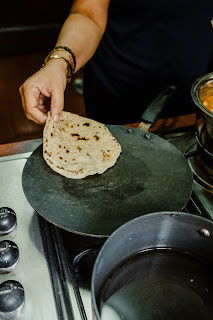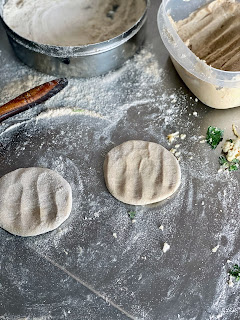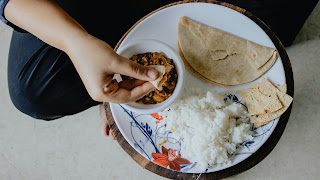I grew up eating soft loaves and are my guide to making them at home. Additionally called Soft Chapati Recipe/Sel Roti Recipe, these two fixings are Indian flatbreads mysterious on the grounds that they are quick, simple, and fulfilling.
Yes, I said Rotis are magical. Because they are made with one material - whole wheat flour (flour) and water if it counts as an ingredient. You do not need any yeast agent such as yeast or baking soda or even yogurt. All you need is some practice and patience. Growing up, we had Make Rotis every single day so I would like to think that I have a good experience in every Tandoori Roti Recipe. And that's what I'm sharing today - everything I know about making soft loaves at home. Let's go one by one.
Dough for Rotis
Flour for Jowar Roti Recipe or chapattis is made from two simple ingredients - wheat flour or flour, and water. A few groups add a spot of salt (I do this ), some add a little oil, however, I like them with no of them. The rough estimate of water from flour is given in the recipe below.
Kneading the Dough
It is important that the dough is smooth, soft, and flexible. This means that when you press the dough, you do not have to face too much resistance, and when you press it with your fingers, it leaves an indentation. The batter ought not to be tacky or dry. It should be comfortable to touch. Once you have mixed the flour and water, knead it using your knuckles and palm. Spread the dough with your palms, bring it back with your fingers, knead it with your knuckles and repeat it until it becomes soft.
Water in the Dough
Water actually plays an important role in this flour. When the rolled Soft Roti Recipe is put on the flame, it creates steam and this is why they swell. how cool is that? So when I knead and keep kneading for a while, I like to add a few extra drops of water. The flour keeps on absorbing water. So the more water you can add to the dough without being sticky, the better it is.
Resting the Dough
Over time I have realized that resting the dough is not important for making good loaves, it is definitely helpful. Allowing the dough to do that - it helps the dough come together, smoothes even more and makes the dough more flexible, easier to roll, and softer.
Rolling out Rotis
This can be the tricky part and it comes with practice and patience. In the beginning, do not tangle in the shape of the loaves. As long as they are somewhat rounded, you are good to go. A small lime-shaped ball is enough, make sure it is smooth and round as you start (see video for this), and then roll them gently with a rolling pin. Too much pressure and your bread may burst and too little pressure and your bread may not flatten evenly.
Cooking soft Rotis
While cooking the griddle or griddle, start on a hot griddle. If your griddle is not hot, the Rumali Roti Recipe will take a long time to cook and they will dry. You start the Missi Roti Recipe on the griddle and finish them to flourish on an open flame. If you do not have an open flame, you can gently press on the edges with a cloth and they will start to inflate on the pan.
I like to finish ghee on hot Missi Roti Recipe. I cannot eat bread without it. If you do not have Ghee, you can make some at home with my Homemade Ghee Recipe. And if this is not possible, just butter them a little.
But most importantly, remember - making soft loaves at home requires a little practice and patience. Some effort, and you will make them like a pro!
What's the Difference Between Success and Failure on the Keto Diet?
Tags:
Food Recipes





